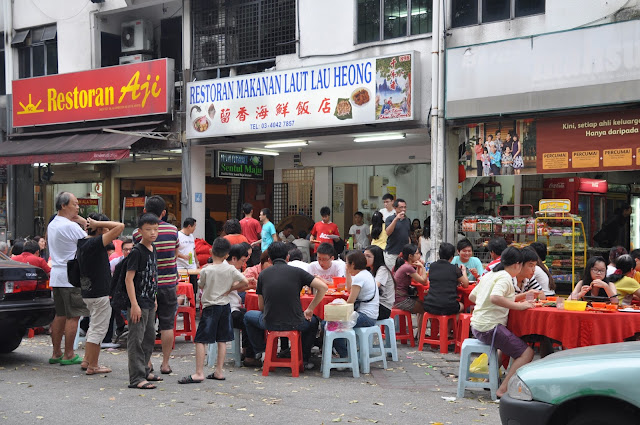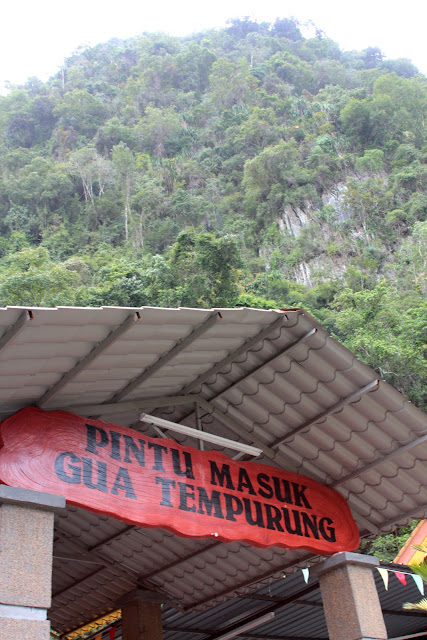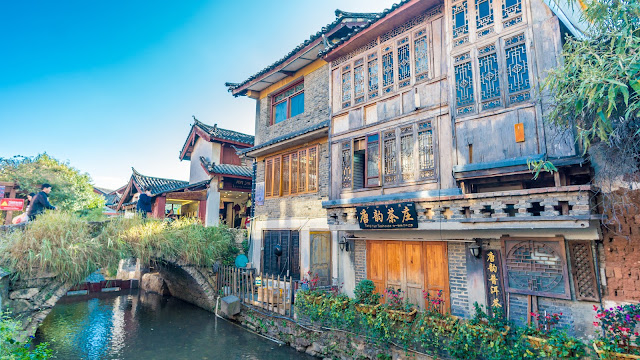 |
| The Huong Pagoda is a vast complex of Buddhist temples and shrines built into the limestone Huong Tich mountains. It is the site of a religious festival which draws large numbers of pilgrims from across Vietnam. The center of the Huong Temple lies in Huong Son Commune, Mỹ Đức District, former Hà Tây Province (now Hanoi). The center of this complex is the Perfume Temple, also known as Chua Trong (Inner Temple), located in Huong Tich Cave. |
 |
| The boat tour including the entrance fee is 100,000vnd. There is an optional cost for the cable car which will take you to Huong Tich Cave. The price is 100,000vnd per person per way or 160,000vnd per person round trip. If you are not rushing and you have the stamina to hike up and down, you can save this cost. |
 |
| To get to Huong Son from Hanoi, you can take a bus or sign up with any tour group if you would like to have a rather relax and non-rush schedule, I would suggest you travel by yourself in a bus. There are many other buses back to Hanoi at night. The duration from Hanoi to Huong Son is just 90 minutes. |
 |
| This is the boat to get you to the Perfume Pagoda. It takes about 50 minutes to 1 hour to reach. |
 |
| The view is unlike Tam Coc Boat Tour or the most exciting Trang An Boat Tour. It is just plain straight river and hot when there is no shade on the boat. The trip seems like going to take forever. |
 |
| It is not enjoying at all. Our back was so tired and aching. Sometimes, you will get speedboats traveling pass us. It makes the whole boat rocking all of a sudden. |
 |
| However, I really pity with the boatwomen who worked really hard to get tourists to the destination. It is not an easy job so please do tip them well. They really need it. |
 |
| Finally, we have reached. We just can't wait to get off the boat. We couldn't imagine we have to go through the journey again when heading back to the jetty. |
 |
| Please do not buy any animals here for release. You will just encourage them to catch them back again. |
 |
| This place is really big. So you really need a full day to travel all of them. |
 |
| It is believed that the first temple was built here in the 15th century, although legend declares that the site was actually discovered over 2,000 years ago by a Buddhist monk who was meditating nearby. The mountain foothills are an area of great natural and spiritual beauty filled with streams, tropical plants, and temples. |
 |
| Approaching from the Day River, one will first come across Den Trinh (Presentation shrine), also known as Den Quan Lon (Shrine of High-ranking Mandarin), built to worship one of the generals of a Hung King. This large shrine has a gate with two kneeling elephant statues on each side. Inside the structure is a large ceremonial room. |
 |
| Beyond Den Trinh is Thien Tru (Heaven Kitchen) Pagoda, also known as Chua Ngoai (Outer Pagoda). Here one will find Vien Cong Bao Stupa, a brick structure where Ch’an Master Vien Quang, who led the reconstruction of the pagoda, is buried. Thien Thuy stupa, a naturally occurring structure that is the result of the erosion of a rocky hill, is also nearby. Thien Tru is also home to a bell tower and Hall of the Triple Gem, last restored in the 1980s. Inside the Pagoda, there is a large statue of Quan Am Nam Hai. |
 |
| On the route from Thien Tru to Huong Tich cave is Giai Oan Temple, also called ‘Clearing Unjust Charges’ Pagoda. Here there is a pond called Thien Nhien Thanh Tri (Natural Blue Pond), also called Long Tuyen Well, and Giai Oan stream, with its 9 sources. |
 |
| It is thought that the first temple was a small structure on the current site of Thien Tru which existed during the reign of Lê Thánh Tông in the 15th century. |
 |
| A stele at the current temple dates the building of a terrace, stone steps and Kim Dung shrine to 1686, during the reign of Le Hy Tong, at around the same time that Chua Trong was being constructed. Over the years some of the structures were damaged and replaced. |
 |
| The original statues of Lord Buddha and Quan Am were cast from bronze in 1767 and replaced with the current status in 1793. More recently, the damage was done during both the French and the American wars. Both the gate and the bell tower at Thien Tru Pagoda were destroyed, the bell tower rebuilt in 1986 and the gate completed in 1994. |
 |
| he center of the Chua Huong complex, Huong Tich Cave houses Chua Trong (Inner Temple). The mouth of the cave has the appearance of an open dragon’s mouth with Chu Nho characters carved in a wall at the mouth of the cave. The characters (Nam thien de nhat dong) are translated as “the foremost cave under the Southern Heavens” and the carving is dated to 1770. The words are attributed by some to the ruler of that time, Thinh Do Vuong Trinh Sam. Inside the cave, there are many statues. |
 |
| There is a large statue of Lord Buddha, as well as one of Quan Am, both made of greenstone. Quan Am's "left leg is stretched out and the foot lies on a lotus flower, her right leg is bent and is supported by a lotus flower with supple leaves; a hand holds a pearl." There are also statues of Arhats and various other figures. Among the naturally occurring features of the cave are numerous stalactites and stalagmites, some of which are worn smooth from years of rubbing by visitors to the cave. |
 |
| Many Vietnamese people visit Chua Huong on a religious pilgrimage. The standard greetings from one pilgrim to another are "A Di Da Phat" or "Namo Amitabha Buddha". For the purpose of pilgrimage, there are various routes that one might take, but the most popular is to take a boat from Yen wharf, stopping at Trinh shrine to ‘present’ themselves at the ‘registration shrine’. The pilgrims then make their way to Hoi bridge and visit Thanh Son temple inside a cave. |
 |
| The next stop is Tro wharf, from which pilgrims travel on foot to Thien Tru Pagoda. After Thien Tru comes Tien temple, followed by Giai Oan temple. It is believed that Buddha once stopped here to wash clean of the dust of humanity, and many pilgrims will wash their face and hands in Long Tuyen Well in hopes of washing away past karmas. While here, pilgrims may also visit Tuyet Kinh cave and Cua Vong shrine to worship the Goddess of the Mountains or Phat Tich Shrine where there is a stone believed to be the preserved footprint of the Quan Am. |
 |
| From here pilgrims head toward the final destination: Huong Tich Cave. At Huong Tich, there are statues of deities, but many pilgrims come to get blessings from the stalactites and stalagmites, many of which are named and have special purposes. Many childless pilgrims seek fertility from Nui Co (the girl) and Nui Cau (the boy), while others visit stalactites and stalagmites thought to give prosperity. Pilgrims often gather under one particular stalactite, which resembles a breast, to catch drops of water in hopes of being blessed with health from the ‘milk’ of the 'breast'. Other names of stalactites and stalagmites include the Heap of Coins (Dun Tien), the Gold Tree, the Silver Tree, the Basket of Silkworms (Buong Tam), the Cocoon (Nong Ken) and the Rice Stack (Dun Gao). |
Total Damage: 100,000vnd per person. Cable car fee is not included.
Ambiance: 4/5
Price: 3/5
Service: 3/5
Recommended?: Yes but the boat tour is not enjoying at all.
Opening Hours: 9.00am - 5.00pm (daily)
































Comments
Post a Comment